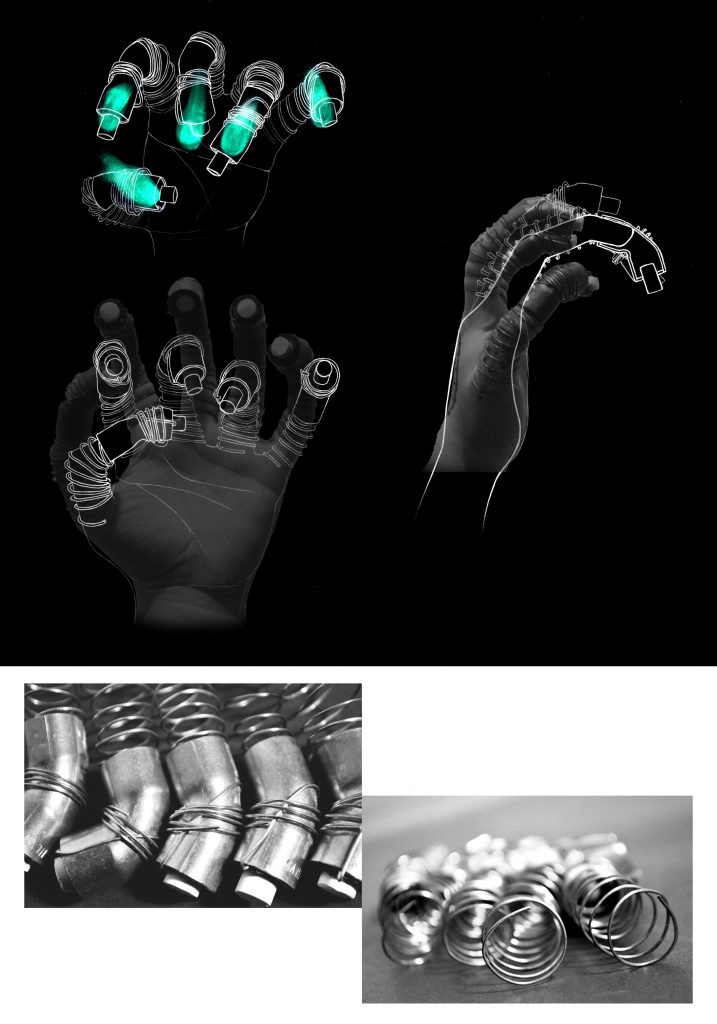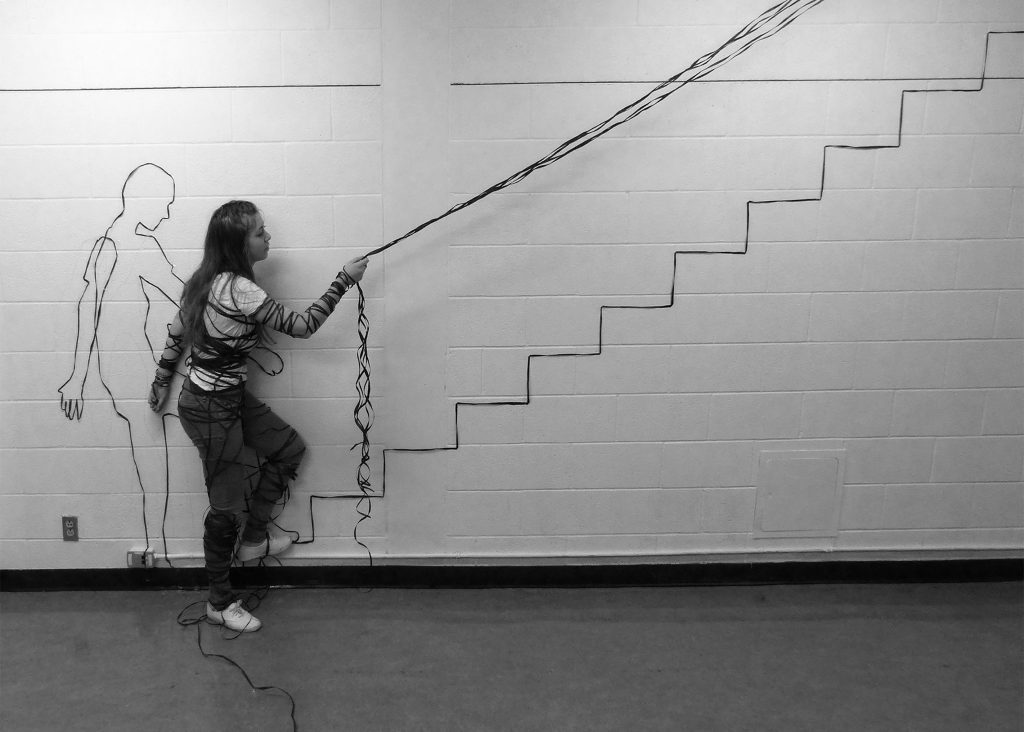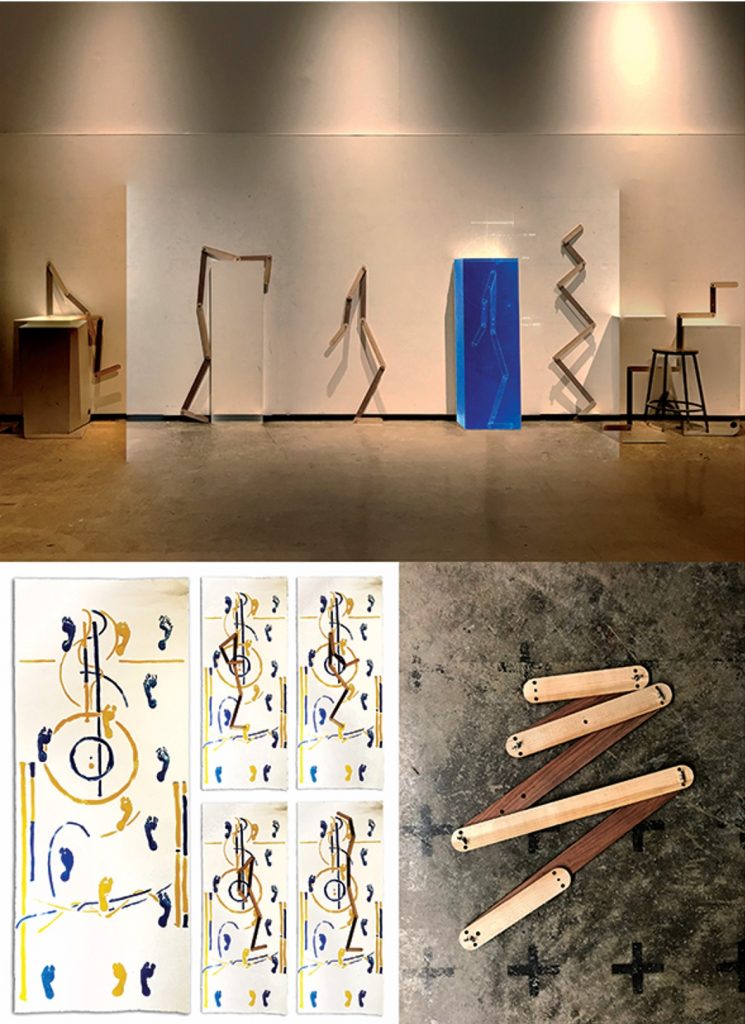New book chapter on drawing by Prof. Federica Goffi features student work
November 25, 2021

A new book, T-Squared: Theories & Tactics in Architecture and Design, contains a chapter on drawing pedagogy by Professor Federica Goffi, interim director of the Azrieli School of Architecture & Urbanism.
In the chapter, titled FACTUM 1:1, Dr. Goffi discusses the theories and tactics for exercises 8 & 7 from her drawing class, Tracing Anthropoietic Performance Drawings 1:1.
The book chapter is divided into two parts. The first part discusses philosophies and ideas about architectural representations. The second describes exercises with images of work by Azrieli School students Sideqa Haqani, Arielle Lavine, and Rubin de Jonge.
“As a way to become aware of the significance of chosen tools, their intentional and unintentional narrative capacity and bearing on design, this exercise (#7) reconnects us—one by one—and 1:1 with the drawing’s ability to generate drawing-thinking and not mere illustrations of architecture,” Goffi writes.
“It is possible to define a unique point of entry into architectural design through the design of a tool that in turn can aid in the design of details such as walls, apertures, ceiling elements, door and windows, stairs, and other details.”
T-Squared: Theories & Tactics in Architecture and Design is a collection of essays exploring the relationship between research that shapes art, architecture and design practices, and assignments developed by faculty for students.
The 278-page book is published by Intellect Press (2021-22) and its editor is Samantha Krukowski, an artist, author and educator who works at the Kansas City Art Institute as The Sosland Family Chair of Foundation Studies.

Hand-tool fitted 1:1. Free hand drawing, in graphite and red color pencils. Metal wire and sheet and chalk.
Courtesy of Sideqa Haqani.

Treading stairs. The traction of drawing manifested in three dimensional rope lines.
Courtesy of Arielle Lavine.

Anthropometric tool in maple and walnut that could be used to map out space at 1:1 scale in the early design phase.
Courtesy of Rubin de Jonge.
Extract from the text by Federica Goffi:
The concept of facticity is under question, and a climate of post-truth affects global politics. While significant attention is given to current cultural, political, economic, environmental and societal debates that challenge our global communities, there is an underlayer of responsibility entwined to architectural discourse inherent in our work ethic and investing the forms of making that contribute to envisioning the world around us, whether through a sketch, a model, or a digital fabrication.
The words verum ipsum factum (the true is the made) enduringly inscribed into the Istrian stone gated entrance of the architecture school in Venice following a design by Carlo Scarpa, are a solid reminder that every human construct is a demonstration of its having been made (see Figure by Prakash Patel). Facticity is based on ‘solid’ evidence and our actions and making rest upon ethical responsibility for how we do things. The IUAV built manifesto—VERUM IPSUM FACTUM—suggests the necessity of a full-scale engagement, from one made fact to the next—FACTUM 1:1.
Source: Goffi, Federica. “FACTUM 1:1.” In T-Squared. Theories & Tactics in Architecture and Design. Edited by Samantha Krukowski. Introduction by David Leatherbarrow. Intellect Press (2021-22).
